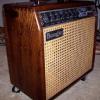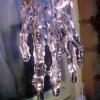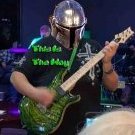Leaderboard
Popular Content
Showing content with the highest reputation since 11/12/2025 in Posts
-
A reminder to all users that this forum is a peer-to-peer user forum. No one from Line 6, particularly not the developers, is required to hang out here. Some do occasionally out of personal interest but we as users shouldn’t count on it. Nobody here can fix a bug or implement a new feature. Accordingly, this is not the official place to make bug reports or feature requests. If you want your bug report or feature request to actually reach Line 6 you need to do something else. To report a bug, open a support ticket. https://line6.com/support/tickets/add.html To submit a feature request: https://line6.com/company/contact/productfeedback/6 points
-
I have read the Stadium online manual from beginning to end. I realize it cannot be in download format because of the embedded videos. So, whether that is good news or bad news it is, in my humble opinion, just news. I realized answers to about 80% of the questions so far, including my 60% of questions, are in the manual. There are few typos regarding XL versus no XL but Line 6 may correct them once the non XL ships. I, for one, will be sitting down for about a week going through each step of the manual. The various sub displays on the touch screen make it worth it for me. If I am not back in a week that means I wasn't able to shower after woodshedding and my wife isn't allowing me in the house until I go YMCA and shower there. I can only speak for myself in that, after reading the complete manual and checking the videos, it will be well worth the trouble for me. Wish me luck. jpd5 points
-
I captured a bit of Steve Sterlacci's video: and imported into Logic so I could use Match EQ to learn more about the differences between Helix Floor and Helix Stadium Agoura amp models. Steve clearly demonstrates the long known issue with Helix Floor having a somewhat odd high-end emphasis (sometime call squirrels, fizz, ice-pick, etc.) that needed to be tamed with pretty aggressive high cuts in the cab block. The Agoura amp models don't see to have this emphasized and somewhat tiring high end. We can use Logic's Match EQ to get a better idea what EQ would be required to make Helix Floor more closely match the Agoura models, and maybe be better informed about how to EQ Helix Floor to tame the high end. The Match EQ graph is quite interesting: As we might have expected, there's additional high end in Helix Floor starting at around 1 kHz, gradually increasing to about 8 dB at around 6 kHz that Match EQ is cutting. What's surprising is the significant boost in the "air" frequencies about 6 kHz and up to 20 kHz. That could be part of the amp models, or the better hardware in Helix Stadium. Now I captured this off a YouTube video, so I don't expect the audio to be that great. And I only matched one sample from the video. So this might not be that accurate. But it perhaps gives us a starting point to know how a little more about how to tame the Helix Floor's high end. So try it, using a high cut at say 5 kHz, or parametric, graphic or even global EQ to match what Match EQ is suggesting. This might breath new life into your Helix Floor.5 points
-
My levels are about the same. I wouldn’t worry about it unless you hear something you think isn’t right. I pay more attention to the signal level indicator in the Output block; if that turns red it means there’s clipping. Also, you can test the output level meter (the one on the right thwt you refer to) in the Amp block. If it behaves like a normal level meter it might change colour to orange and then red as you raise the amp’s Drive/Gain, Master, and/or Channel levels. I don’t know if it actually does change, but if you can make it change colour then you can be confident everything’s OK as long as it stays green.3 points
-
Yes, custom setlists is the way to go for live events. Be aware, though, that the implementation of setlists is completely different in Stadium vs. OG Helix. There is a big conceptual change, and I think some bugs that still need to be worked out. The following is aimed at all readers here, not you specifically….. Conceptually, the USER setlist is now the only place where the actual presets live. A custom setlist is a list of aliases (pointers) to the USER setlist presets. Read the associated section in the online manual for clarification. This is still early days for the new mindset and implementation. I have experienced and reported some behaviours that I think are bugs: - when you Export a preset from the USER preset view it creates the associated preset file on your computer, as expected. When you Export a preset from a custom setlist view it creates a copy of the alias on your computer. If you’re not careful you can overwrite the actual preset on your computer. I think Exporting presets from the setlist view should be disabled; I can’t see any use for saving a single alias in a file. I can see a use for exporting/saving a setlist of aliases. - I have also experienced duplicates. I think there should only be a single copy of any preset name. I think any bracketed duplicate preset name is the result of a bug. If it’s a different preset it should have a different name; if it’s actually a duplicate of the same preset it shouldn’t exist. That’s the whole idea of the new implementation. My suggestion at this point, until some bugs are resolved, is to edit and Save presets only from the USER setlist view. The interaction between the presets themselves in the USER setlist and their aliases in custom setlists is where I think the bugs live. This will require careful attention and some extra touches (on the device) or mouse clicks (in the app/Librarian) for a little while to make sure you are in the USER setlist view but it should reduce the unexpected behaviours. I may end up eating my words here. If there is a valid reason for duplicate presets to exist in the USER setlist I would like to hear it. Meantime I encourage everyone experiencing duplicate preset names to open a support ticket to report it. The more info and evidence Line 6 has of these bugs the more likely they will get fixed sooner than later.3 points
-
I just received my Stadium XL yesterday and I was able to stay connected for 4 hours.... no disconnects from the edit software (Windows). I have an eero mesh Wi-Fi (currently connected to the main AP) and my AP is in another room, about 15 feet away. I am connected at 5Ghz speeds on both the PC and the stadium. So... for me very stable. I would suggest that if you are having issues, try to get both devices on the same speed but if your AP is very far away, try to get both devices on the 2.4Ghz channel. This may not be a bug for Line6 to address.3 points
-
Hope this helps as well - In the list view for amps (not legacy amps) there will be a thin gray line and any amp above is Agora and those below are HX.3 points
-
STFW means Search the F*&$ Website! I just want to highlight that Line 6 has taken a new approach to the product manual for Helix Stadium. It is not a downloadable PDF file. Instead, it is its own integrated, cross-referenced, well indexed, searchable website that includes links to videos where appropriate. It also includes the Helix Stadium app ‘manual’. The Support -> Manuals area provides a link to this new ‘manual’. I strongly suggest you check it out. For your convenience… https://line6.com/helix-stadium-manual/ We all know that it is common etiquette in user forums to do at least some research for existing answers to questions, especially basic operational questions, before asking in the forum. This new approach to the manual makes that very simple. So, in future, rather than suggesting that someone RTFM I will just say (politely, of course) STFW.3 points
-
I connected the send 1 from my Stadium to the input for a stage monitor I have on hand. I set the FX loop 1 output to instrument because line level was too loud. Then I set the output for the tuner to send 1. When I used the tuner there is no output to FOH and the monitor gave me my ""on stage" audio. Adjusting the level output on the monitor, I was able to have a very controlled output volume to listen to my tuning as well as if I wanted to "test" a part without going through the board. If you have something like a Behringer EUROLIVE B105D (or smaller) and a On-Stage SSAS7000B it could be a solution for about $150.00 without having to bend over. Just a thought. jpd2 points
-
Why is there no option to have the preset BPM persistently displayed above the tap tempo switch like there was in Helix floor? I have looked everything in global settings as well as the same spot in the OG Helix Displays settings. Would love for this to be included in the next update, please!2 points
-
I setup my Helix boards with the Snapshot buttons I'll use along the bottom row so that when a solo is coming up I can just plant my heel in front of the button I need and press it without looking down at the board. I was concerned about the Stadium buttons being closer together, although now that I have the unit its not a real significant difference. Still if I accidentally press the BANK DOWN or the TAP TEMPO button that can screw up a performance. To reduce the chances of inadvertently pressing the outer buttons I made a couple of plastic "guardrails" to create a separation wall between them. The plastic walls are adhered to the unit using double-side tape. They actually work better than expected. I positioned the walls closer to buttons 7 and 12, but its still easy to use these buttons , and besides they're only used in between songs so I can aim my foot more carefully when using them. I uploaded the 3D files to Printables.com in case anybody else is interested in printing a pair of these rails. https://www.printables.com/model/1507235-button-guardrails-for-helix-stadium-guitar-process2 points
-
The Big Book of Helix Tips and Tricks (available on Sweetwater, author Craig Anderton) does a fantastic job of this. There’s also a very good website: helixhelp.com2 points
-
When are we going to get a printable file version of the manual? Some of us like to read and understand things to make better use of the unit's features. Especially with the upgrades coming for Showcase and Proxy. The on screen stuff is great and all but something of this depth and complexity needs a manual.2 points
-
Warning: This is a lengthy and future oriented post. Probably not for everyone. It’s aimed at users who use lots of presets, want to manage different band setups, want to share the Stadium device with other users, or… The handling of presets and setlists has fundamentally changed from Helix to Helix Stadium. You can no longer swap setlists in and out willy nilly because they contain only aliases to the actual presets that reside in the USER setlist, of which there is exactly one with a limit of 512 onboard presets at any time. Also, since setlists contain only aliases it is possible to accidentally end up with a setlist that is not synchronized with the onboard presets - e.g. importing a setlist containing an alias to a preset that has since been deleted from the USER setlist. Or (worse) exporting a preset from a custom setlist view, thereby exporting the alias and perhaps unintentionally overwriting the actual preset in your computer folder. Further, we know that the Showcase feature is coming and that it will support preset and snapshot changes at any point in a Song. When you put all this together it becomes clear that the USER setlist, custom setlists, and Songs (including audio stored on the microSD card) are an integrated dataset that must remain synchronized. How do you manage this from a workflow perspective? How do you keep your dataset synchronized and work around the 512 preset limitation? Easy to say ‘just remove the limit’ but there will always be a limit and no matter what it is it will eventually be reached because…. Well, because we can. Now, 512 presets seems like a lot to me but I am a studio player, not a multi-band gigging musician. If I find myself in a different situation someday and keeping things synchronized becomes complicated, the following is what I would do. There is a set of functions called Helix Stadium Maintenance that is accessible using a special startup sequence as described in the final section of the online manual. Hold down the Home and Song buttons when starting up. Among the maintenance functions is a Backup and Restore capability. The manual states that the Create Backup function saves the backup file to the inserted microSD card. That’s the key to maintaining different synchronized datasets, essentially different system images. You can use different microSD cards to store different system images, with each image being for a different purpose. For instance, you could have a different dedicated image/SD card for each band you belong to, or simply for overflow when you have exceed the 512 limit, or for different device users. Here’s a suggested workflow to utilize this strategy: At the end of each session you would need to: - power down the Helix Stadium device - restart it while holding down the Home and Song buttons. This will cause the device to start in the Helix Stadium Maintenance mode. - insert your desired microSD card and Create Backup - when complete, select the Shutdown option on the Maintenance screen At the beginning of each session you would need to: - restart the Helix Stadium device while holding down the Home and Song buttons. This will cause the device to start in the Helix Stadium Maintenance mode. - insert your desired microSD card and Restore Backup, selecting the desired backup file - select the Shutdown option on the Maintenance screen - restart the device normally This workflow would provide a means to work within the current limitation and ensure that you always have a system with a dataset that has synchronized onboard presets, custom setlists, IRs, Songs including audio files, and (bonus!) Global Settings.2 points
-
Glad you got it working. I want to correct some inaccurate information I provided earlier. The Helix StadiumMaintenance screen is not available from the Menu icon. It is only available through a startup sequence. You can hold down either FS 6 and 12 (as I suggested) or the Home and Song buttons (as described in the manual) when powering up.2 points
-
2 points
-
I believe it is only global. It might be useful if you could make it per preset. That said, you can manage the outputs related to the preset, well, per preset by sending them directly to the outputs. That is what I did (I have an elec guitar/2 piezo guitars setup as my normal gig configuration).2 points
-
He also frequently reminds us that they don't publicly discuss the details of future updates. Reading between the lines, look at the price points of the products. Helix is still in the top three modelers for both quality of sound and features. Unless you NEED the advanced features of the Stadium products, the only reason to dump your Helix for a Stadium is that you have too much money in the bank. The only REALLY BIG DEAL feature in Stadium is the "PROXY" capturing/profiling (COMING SOON!). I own a ToneX and have tried NAM and, TBH, I'm underwhelmed. Not that they sound bad but faced with the choice of tweaking knobs until I get a sound I like (what we do with REAL WORLD amps) or auditioning 100,000 captures (another rabbit hole like the 100,000+ IRs I have purchased over the years), I'll keep tweaking, Thank You Very Much! Helix will continue to sell well to players who need a great sounding modeler and would rather spend our time PLAYING MUSIC. As to updates, I've owned mine for 10 years and never been disappointed in the updates. If they never added another feature I wouldn't complain, but I suspect that we'll be pleasantly surprised as they continue to improve/optimize the platform in order to continue their dominance at the Helix family's price point in the market. Interesting side note - Fractal just released a new product that looks VERY MUCH like the HX Stomp XL, at that price point. No capturing there either.2 points
-
I just did a little test. I created a new custom setlist. As expected the view showed all Empty slots. I selected preset 1A and added an amp. I then saved the preset, still within the custom setlist view. I gave it a name when saving as a New Preset. It appeared as expected in the custom setlist view as preset 1A. I then immediately deleted the custom setlist, which disappeared from view as expected. Also as expected the new preset appeared and remained in the USER setlist where all presets actually live. It appeared not as 1A but as 10A which happened to be the first empty slot after the last named preset in the USER setlist view.2 points
-
Ok. Usually this kind of noise can be picked up if there is either no ground connection or more than one (ground loop). We can exclude a ground loop based on your description. The fact that it goes away if the Helix is plugged into a (grounded) amp points to a missing ground connection. Helix is grounded by the power cable which might be defective - so try a different power cable. It could also be an ungrounded power outlet. So try it in a different room.2 points
-
Open a support ticket or call Line 6. Info for both is under the Support link at the top of this page. If that’s too much of a hassle then …. do whatever to deal with your issue.2 points
-
I think that’s simply not true. I understand that there will be full Variax control from Stadium presets as there is with Helix. What is the source of your information?2 points
-
You’ve obviously put a lot of time and thought into this.For maximum effectiveness (I.e. to have it noticed by actual Line 6 developers) you should repeat it in the Product Feedback area, which is here: https://line6.com/company/contact/productfeedback/2 points
-
Just learned the hard way that if you click a preset in a "set list" and export it as a file, it's a 1K file with nothing in it since set lists use Aliases. You have to export the preset from the "User Presets" list to actually export the preset.2 points
-
The first thing I notice is that your firmware is well out of date. It’s entirely possible that you’ve come across a bug of some sort that has since been fixed. Update your firmware to the latest version. There won’t be many users here that can test what you’re describing and comment on it. If you don’t want to update you can open a support ticket. But I expect the first thing they’ll say is “Update your firmware”.2 points
-
It will be available but will require additional hardware, the Expand D-10 device.2 points
-
I will probably do this over time, one preset at a time. I find that the improvement in tonal quality and dynamics of the Agoura amps is worth it but as you point out it would be an arduous task if you took it on all at once.2 points
-
Hi all, I had a question about swapping out the factory microSD card with a higher capacity card. I heard that I could potentially store presets on the card. The process to change the card and to format the card seems pretty straight forward in the users manual, but I wanted to ask the following (these may seem silly, but feel better safe than sorry). Will swapping out the microSD card remove or alter any installed user presets, IR's etc? I just want to know the repurcussions of swapping out the microSD card for a unit that I have spent a bit of time installing my presets I used on my Helix. Appreciate your help.1 point
-
1 point
-
Obviously it is. Evem for the European support. But thanks a lot for your passionate engagement.1 point
-
This was somewhere in Youtube comments : "I can confirm that a 1TB SD card is recognized and can be mounted to the Helix Stadium" Still waiting my Stadium XL, so not tested by me.1 point
-
Though the manual states the USB-C is for a non-Wi-Fi way to update the firmware, the USB-C interface also allows me to use it as an audio interface because of the Stadium Driver. I set the driver as the interface in my DAW as well for use with the USB-C connection. I notice both Wi-Fi and the USB connection is a choice when I access the Stadium app. Though for now I have not made any attempts to use USB. Still reading, learning, and trying various manual based suggestions only.1 point
-
Great that it's not a big deal for you, but for me it's a big nuisance. If I am working in a setlist and make a change on the fly and save, I get switched to the USER PRESETS. This means I get an unexpected next preset if I don't switch back to the setlist. That is actually a big deal. If I can't rely on being in the setlist I need and also can't see on the screen if I'm there, it makes me nervous in a live situation.1 point
-
I really wish each AMP and Effect block had a complete description of what hardware it is based on, and perhaps a description of common settings, sidechaining strategies, and how any of the controls may interact/overlap. I can find some of this by looking at the U.S. Registered Trademarks, but not all. For instance, a better explanation of the Asheville Filter effect would be very helpful, such as explaining what the various patterns are.1 point
-
I'm saying to uninstall/ re-install everything Line 6, BUT... I had a little more time to look at your screenshot of your Device Settings. Before I make any other suggestions, a couple of questions: What is your Lenovo's FULL model #? Processor model? When you got it, did you perform ALL of the available Windows updates? That means rebooting and re-checking Windows Updates until there were no more updates to install on two or more successive reboots? Did you then install all of your other (non Line 6) applications? What applications did you install? Are you backing up all of the relevant (to those applications) data directories to OneDrive or elsewhere in the cloud? Are you using ANY antivirus/malware programs other than Windows Defender? Did you uninstall whatever crapware that the Lenovo came with pre-installed? A screenshot(s) of your Startup settings - SETTINGS>APPS>STARTUP - could be helpful here. I know, that's a lot of questions and you might not understand why they are relevant, but there is no logical explanation for why a brand new Win11 system should be as hosed as yours seems to be, and before I make any further suggestions I need to know these things so that I don't make things worse. TBH - depending upon your answers to the above, my best advice MIGHT be to restore it to the condition it was in when you took it out of the box, then come back for advice on how to proceed. But that could be painful and very time consuming. I've been using Windows since before there was Windows (DOS) and if it's not necessary...1 point
-
You need to open a support ticket to officially report a bug to Line 6.1 point
-
lespaulphase90, As silverhead stated you need to use the Helix Stadium XL down of "Helix Stadium. HX-Edit does not work. I've added a screen shot. I was little confused at first myself. You will only connect via Wi-Fi on the same network for creation on the Stadium. You will not use the USB cord for creating presets and setlists for now. If you do need to use the USB cord it would be for updating firmware in a pinch or connecting to your DAW; the reason for the Stadium drivers. I had to use a USB-C to USB-C cord as nothing else would work; and that was after I read the manual. I chose to uninstall everything "old Helix". The software, the HX Edit, the drivers, etc. I even removed the uninstall module(s). Hope this helps. jpd I1 point
-
Made the switch from the Helix Floor to the Stadium XL. Been trying everything I can think of to get the Helix Stadium XL to recognize my pedal. I use it for almost every patch and song. Much appreciative of any feedback or advice.1 point
-
1 point
-
It's very important to me. Helix being this way was really great.1 point
-
In that case your only options are: Open a support ticket. They'll probably tell you to ship it to them in California. I had the top knob (between VIEW/SAVE) on mine simply start doing crazy stuff. It was out of warranty, but I shipped it to them and they replaced the whole unit. They're good that way.1 point
-
That might be accurate but I’m not sure. As I understand it the Legacy Amp subcategory includes amp models of previous generations of Line 6 modeling such as POD HD500, or POD XT/X3. The Guitar Amp category includes both Agoura models and Helix models as indicated here: https://line6.com/helix-stadium-models/1 point
-
Hi I was curious about the Stadium's manual (https://manuals.line6.com/en/helix-stadium/rev-a-v1.1.0/quick-start) cause I would like to know if we would have a quantized looper on this product. I may have missed the information but I'm chocked that this new product doesn't have this function. I'm really disapointed. It's really a big downside for me. The Stadium would have been perfect1 point
-
1 point
-
I'm back from FAS Land (although I'll still be keeping my AFX III Mk II Turbo and FM9T. Ready to try the new thing on the street once the pre-order gets here!!!1 point
-
I'm not going to re-type my explanation/refutation of your nonsense assertions. If anybody believes this guy, tag me and I'll link to the LENGTHY discussion that he hopes nobody is skilled enough at SEARCH to find for themselves. The short version - there's a SWITCH. In one position it IS attenuated. In the other position it is NOT attenuated. It's an OPTION. The long version explains the reasoning.1 point
-
I have it working better than before but had to max things right out to get a working clean sound; minimum gain, max master and channel volume. It sounds OK but you lose headroom on your other channels, if they're too loud then the clean sound is inaudible by comparison. On the whole I'm very, very happy with the PodExpress especially for the very small amount of money, but Line6, if you're listening, maybe a little more headroom on the only clean amp?1 point
-
Anyone else have a proximity sensor fail on an LT? (pedal sensor) Line6: sorry, here's a $185 replacement board part# if you want to purchase a new one from Full Compass. I'm already using a volume pedal because I broke a pedal years ago. Any suggestions for a good expression pedal? Thanks,1 point
-
Hi all, just got a Helix (so excited!). I know Helix Help gives a lot of detail on the true names of each individual piece of gear, which is awesome, but is there something similar for the factory presets? For example - is there a spreadsheet or table online that says something like the below? Apologies if this is on the board or elsewhere, and google failed me. Thanks in advance for the help! Factory Preset: Plush Garden Artist: Stone Temple Pilots Song/Album: Plush (Song)1 point
-
I knew it was something simple, I went into the mixer part of pod farm sure enough right at the top it was set to instrument (never remembered even doing that), set it as Mic 1 and bam instant sound thank you!!!!!!!!!!1 point
This leaderboard is set to Indiana - Indianapolis/GMT-05:00



.thumb.jpg.9b45f80c19eb8dece1fc7d6e6949195e.jpg)






